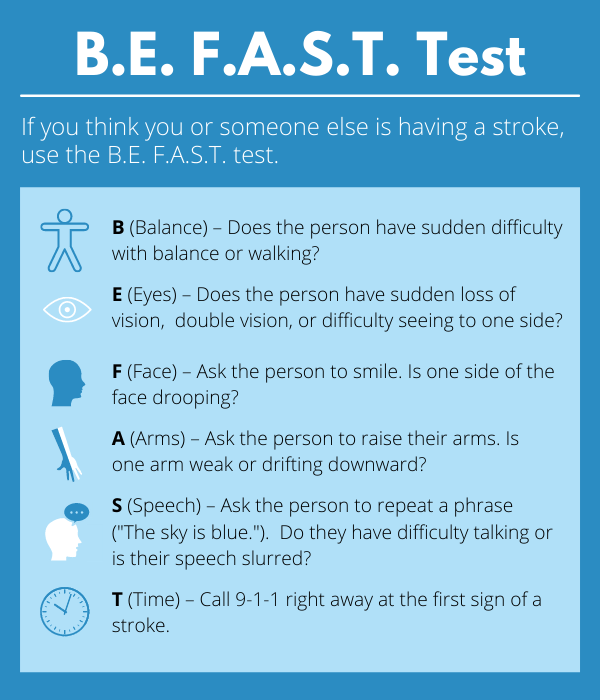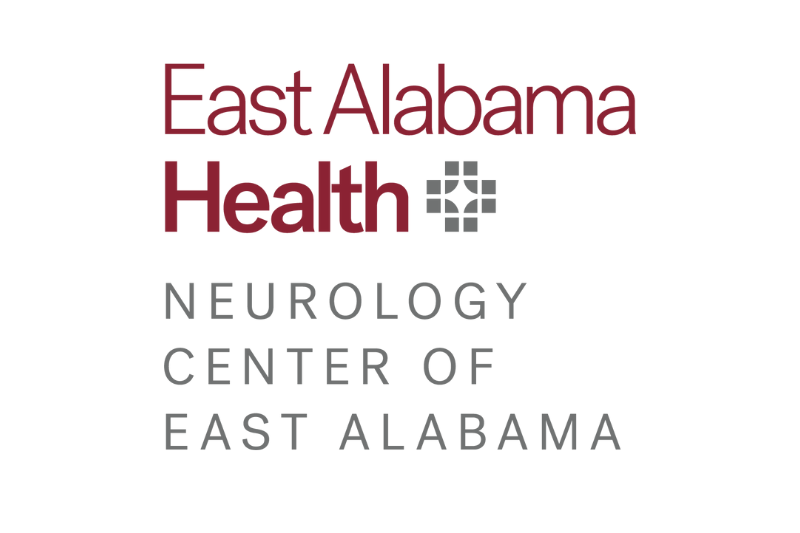Stroke
What is a stroke?
A stroke happens when a blood vessel that carries oxygen and nutrients to the brain is either blocked by a clot or ruptures in the brain. As a result, part of the brain does not get the oxygen it needs, so it starts to die. The human brain is divided into several areas that control movement and sensory function, or how the body moves and feels. When a stroke damages a certain part of the brain, that area may no longer work as well as it did before the stroke. This can cause problems with walking, speaking, seeing, or feeling.
Risk Factors for Stroke
Risk factors you cannot control:
- Age - The chance of having a stroke more than doubles for each decade of life after 55.
- Gender - Stroke is more common in men than women. However, more than half of total stroke deaths occur in women. Use of birth control pills and pregnancy pose special stroke risks for women.
- Race - African Americans have a much higher risk of death from stroke. This is partly due to increased rates of high blood pressure and diabetes.
- Heredity - Your stroke risk is greater if a parent, grandparent, sister, or brother has had a stroke.
- Prior Stroke, TIA, or Heart Attack
- Sickle Cell Disease
Risk factors we can screen for and can help you control:
- Diet - Diets low in salt and low in fat can lower your blood pressure and, more importantly, lower your risk for stroke.
- Medications - Medications should be taken exactly as directed and should not be stopped unless you are told by your physician. If you are experiencing side effects of these medications, speak to your doctor or pharmacist.
- Carotid Artery Disease
- Peripheral Artery Disease (PAD)
- Atrial Fibrillation
- Coronary heart disease, congestive heart failure, cardiomyopathy (enlarged heart), heart valve disease, and congenital heart defects
- High Blood Pressure - High blood pressure is the number one cause of stroke.
- High Cholesterol
- Smoking
- Obesity
What is a warning stroke/transient ischemic attack (TIA)?

A TIA is a temporary blockage of blood flow in the brain. It happens when an artery in the brain gets clogged and then reopens on its own. This can happen if a blood clot forms then moves away or dissolves. A TIA is a very serious medical emergency, and the symptoms, which may resolve within minutes or hours, are the same as they are for an actual stroke. During a TIA, there is no permanent injury to the brain, however, after a TIA there is a much higher chance of an ischemic stroke in the next few weeks.
TIA and Stroke Signs and Symptoms:
- Sudden confusion, trouble speaking, or understanding
- Sudden weakness and/or numbness in the face, arm, or leg (usually only on one side of the body)
- Sudden uneven facial expression
- Sudden trouble seeing, walking, loss of balance, or loss of coordination
- Sudden dizziness and sudden sever headache with no known cause
- Sudden nausea or vomiting (starts suddenly unlike the flu, where it happens over a few days)
If you think you or someone else is having a stroke, use the B.E. F.A.S.T. Test. Not all signs and symptoms occur in every stroke – you may only have one symptom. Don’t ignore it! It’s ok to overreact. Call 9-1-1!
Inpatient Stroke Program
Stroke Patient Testimonial
Other Resources:
- National Stroke Association (NSA)
800-STROKES
www.stroke.org
- American Stroke Association (ASA)
888-4-STROKE
www.strokeassociation.org
- Brain Attack Coalition (BAC)
www.stroke-site.org
- National Institute of Neurological Disorders and Stroke (NINDS)
https://www.ninds.nih.gov/health-information/stroke/stroke-overview






